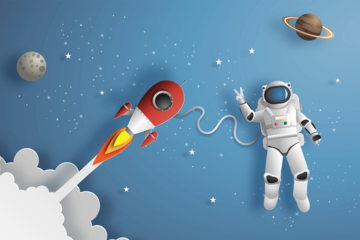The Sun, Moon, and brightest planets were visible to the naked eyes of ancient astronomers, and their observations and calculations of the movements of these bodies gave rise to the science of astronomy. Today the amount of information on the motions, properties, and compositions of the planets and smaller bodies has grown to immense proportions, and the range of observational instruments has extended far beyond the solar system to other galaxies and the edge of the known universe.

YOUTH EMPOWERMENT, EDUCATION
Artificial satellites
BY AAP Bridge at AAPBridge
Artificial satellites can be either unmanned (robotic) or manned. The first artificial satellite to be placed in orbit was the unmanned Sputnik 1, launched October 4, 1957, by the Soviet Union. Since then, thousands have been sent into Earth orbit. Various robotic artificial satellites have also been launched into orbit around Venus, Mars, Jupiter, and Saturn, as well as around the Moon and the asteroid Eros. Spacecraft of this type are used for scientific research and for other purposes, such as communication, weather forecasting, navigation and global positioning, Earth resources management, and military intelligence. Examples of manned satellites include space stations, space shuttle orbiters circling Earth, and Apollo spacecraft in orbit around the Moon or Earth.
New Section
INSTRUCTIONS:

